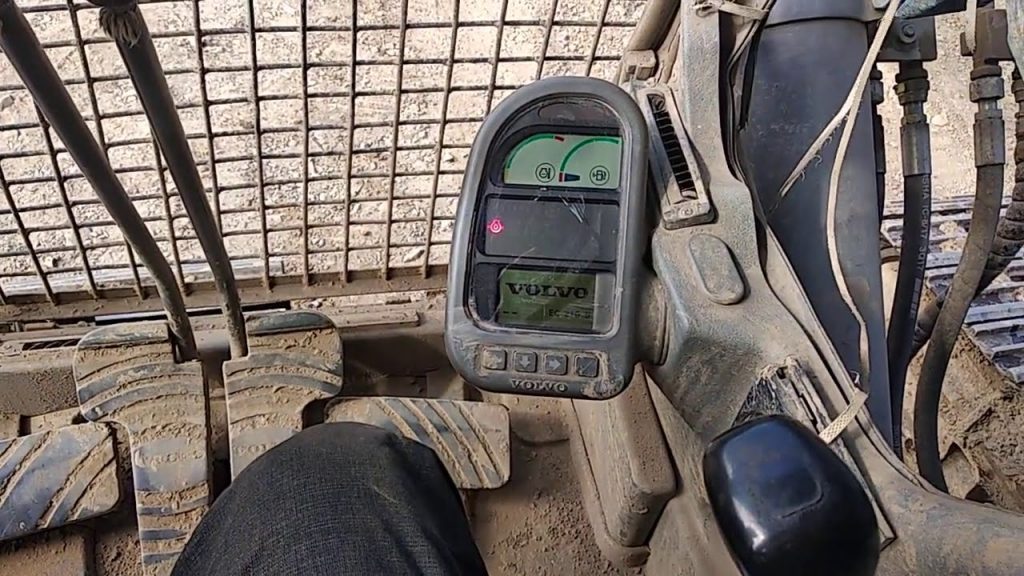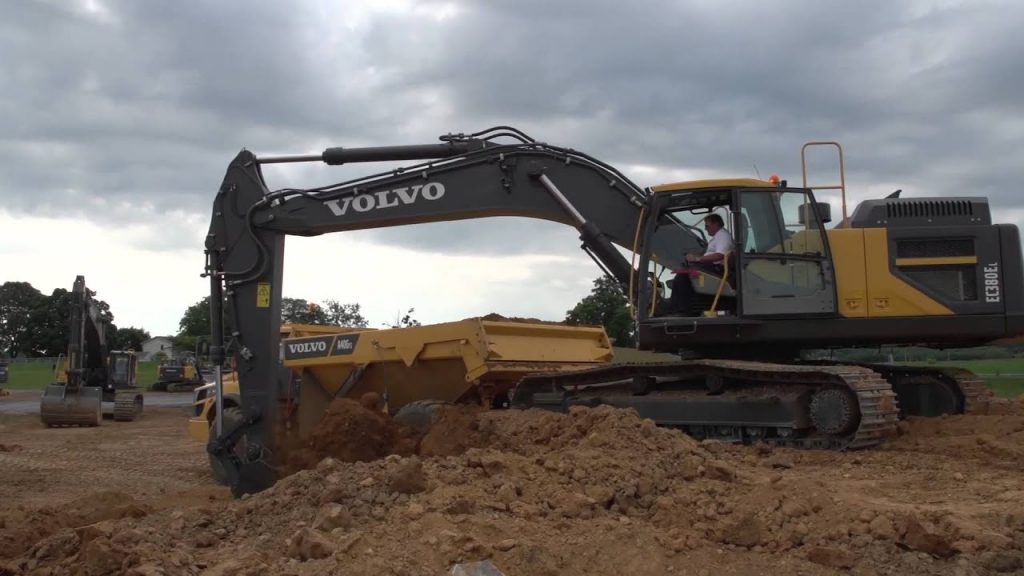Today, I am going to discuss some basic troubleshooting process of volvo excavator. Volvo excavator is one of the best models among all other available models in the world.
what to do when you had a leak around the volvo excavator oil filter housing
A leaking seal is the most common problem with this housing. There are two seals in the housing and both can leak.
Before you try anything, make sure you have enough room to take those parts out. The back bottom plate is covered with a tube that runs from the radiator to the oil cooler. You will have to remove it either from the oil cooler or from the radiator end. It is made of plastic and it is very fragile so be careful with it.
If you had a leak around the volvo excavator oil filter housing, please find the reason first. Then refer following steps:
1) Remove the cartridge filter and check if there is anything wrong with O-ring. If yes, please replace with new one and reinstall the filter again.
2) If there is no problem with O-ring, please check if it’s too loose when set up the filter. The tightness should be 20Nm by wrench. If it’s too loose, please retighten it.
3) If still have leakage after above two steps, please check if it’s leaking from the screw holes on filter housing. If yes, maybe the thread has been damaged or worn out from long time useage or previous maintenance, then you can take out of all screws (4 in total) and repair them by thread file to make them fit for screws again.
4) If still have leakage after above three steps, please replace new filter housing for it as a whole unit.

what to do when you had volvo excavator black smoke at high rpms
Volvo excavator black smoke at high rpm could be the result of many things. It is common for Volvo excavators to blow out some black smoke when under load but excessive black smoke is a reason for concern.
In order to determine what is causing the black smoke, it is important to conduct a series of tests. A thorough test will help identify any abnormalities that would contribute to the excessive black smoke.
Here are some of the tests you can do:
1 .Volvo excavator black smoke first check the engine air filter and replace if dirty or damaged. If the air filter is clean, check the turbo boost pressure by connecting a pressure gauge to the intake manifold or pressure pipe between the compressor outlet and throttle valve. Boost should be within specification. If it’s not within specifications, perform turbo charger overhaul or replacement as needed;
2.Check fuel supply pump and system, including fuel lines and filters; check injection timing;
3.Check cylinder compression; remove injectors and fill with oil, then turn engine over several times in order to remove any water from cylinders. Replace injectors and perform adjustments as needed;
4.Check exhaust valves for carbon deposits and recondition as necessary;
5.Check oil control valve for wear and replace if
what to do when you had volvo excavator black smoke under load
If you had volvo excavator black smoke under load,you have to check whether it is caused by air filter.Air filter is used to purify the air intake and protect engine from damaging when air is not clean.Usually,when the air filter is blocked,engine will be lack of oxygen,causing volvo excavator black smoke under load.
If it doesn’t work well,you should replace a new one or clean it.When you clean it,please note that filter material should not be damaged.If the damage was found,it must be replaced a new one.
After replacing or cleaning the air filter,if there is still volvo excavator black smoke under load.Then the problem may be related to fuel system failure.
The injector nozzle of excavator can mist fuel into atomized state and then spray into cylinder through intake system so as to make full use of diesel’s heat value and realize complete combustion.If fuel injection quantity was increased or abnormal combustion happened in cylinder,the fuel system will become faulty and cause volvo excavator black smoke under load.
1. The fuel injection pump is not adjusted or the adjustment screw is loose, resulting in insufficient fuel supply or too much fuel supply. When the oil supply is insufficient, the piston is not fully burned after ignition. The unburned gas is discharged with the exhaust gas to form black smoke. When the oil supply is excessive, it will also form black smoke and lead to cylinder pressure rise and reduce engine power.
2. The combustion chamber leakage of the engine is too large, and part of the air enters the cylinder through the leakage point. Due to insufficient oxygen in the cylinder, it will form an incomplete combustion phenomenon and discharge black smoke with a large amount of carbon deposition;
3. The gap between the valve and the valve seat increases due to wear or improper assembly, which causes poor sealing at idle; when the engine speed increases, due to excessive valve clearance, part of the compressed air leaks into through this gap during compression stroke before ignition, causing insufficient oxygen in cylinder after combustion and forming an incomplete combustion phenomenon;
what to do when volvo excavator are no gauges on the instrument panel
On the Volvo EC210BLC excavator I have, when the engine is started, all the gauges on the instrument panel (fuel level, hydraulic oil temperature, hydraulic oil pressure, battery voltage) start working normally. But after several minutes of work, they all stop working. This occurs intermittently and not always at once. For example, today only the fuel level did not work.
1. Turn the key switch to the ON position.
2. Depress and hold the reset button for at least 2 seconds. If the check engine lamp flashes, there is a diagnostic trouble code stored in the ECM memory.
3. The number of flashes indicates which fault has occurred. 4 flashes means that you have a 4-1 fault (which is a pressure sensor failure) or 6 flashes means that you have a 6-1 fault (which is an engine speed signal failure).
what to do if volvo excavator is an engine warning light on the instrument panel
Volvo Excavator EC210B. If the engine warning light on the instrument panel lights up, the main reason is that the engine sensor is faulty. The maintenance steps are as follows:
First, check whether the sensor has a bad contact or loose contact. If there is, repair it in time and solve it;
Second, take out the sensor and use a multimeter to measure the resistance of the sensor. If there is no resistance, replace it with a new sensor;
Third, if there is resistance, connect the voltage signal input port of digital multimeter DC 30V to the electric connector of sensor, and then check whether the output signal meets the technical requirements;
Fourth, if not, check whether other parts connected with sensor are damaged or aging.
what to do when volvo excavator is an air conditioning compressor fault
1. Air conditioner compressor and clutch are not engaged;
2. The air conditioner compressor oil level is insufficient;
3. The refrigerant pressure of high pressure side is too high;
4. The engine speed is too low;
5. The temperature of evaporator outlet is higher than normal temperature;
6. Air conditioner clutch coil resistance abnormal
The principle of volvo excavator air conditioning fault diagnosis is to find out the cause of the failure, and then take corresponding measures according to different causes or symptoms.
The following measures should be taken when the fault of volvo excavator air conditioning system occurs:
1. There may be a problem with the control system, so you need to check whether there is voltage on the compressor fuse and whether there is power on the positive line of the compressor when it starts; if there is no power supply, check whether there are problems with lines and fuses, or whether there are problems with control components; if there are power supplies on both sides, it can be judged that there is a problem with the compressor itself, and it needs to be replaced by a new one after disassembly inspection.
what to do if the volvo excavator operates but will not move forward or reverse
•Low oil level in hydraulic tank. Check and fill to proper level.
•Hydraulic system leaks. Repair leaks.
•Damaged or worn hoses or connections. Replace or repair as needed.
•Valves in a neutral or bypass condition. Repair or replace valves as needed.
•Valves in wrong spool position, cross connected, etc.. Repair hydraulic plumbing as required to correct flow direction, etc..
•Valve failure (bent spool, broken spring, etc.). Replace valve as needed.
•Pump failure (worn rotor, stator failure, internal leakage, low pump pressure). Repair or replace pump as needed.
•Engine not running at proper speed (pump speed too low). Check with engine tachometer and make adjustments to engine governor as needed to increase engine speed if possible.
•Motor failure (worn bearings, seized motor). Repair or replace motor as needed.
what to do if volvo excavator is excessive travel pedal effort required for steering or travel
If you have an excavator with a Volvo engine, you may be wondering what to do if your car has excessive travel pedal effort required for steering or travel.
The first thing that you need to do is check the oil level. If it is too low, then you will need to add more. The next thing that you need to do is check the pressure in the air filter. If it is too high, then you will need to get it replaced.
If you have an excavator that has been in operation for a long time, then there may be some other problems with your vehicle. This can include things such as a leaky exhaust manifold or a bad spark plug. These should be checked and fixed before they cause serious problems with your vehicle’s performance.
If you have an excavator with a Volvo engine, then one of the things that you need to know about is how to troubleshoot the problem. For example, if your excavator has excessive travel pedal effort required for steering or travel, then there are two things that you should look at first: the oil level and the air filter pressure.

what to do when volvo excavator is a rough ride
The question of “What do I do when my Volvo excavator is a rough ride?” is one that many construction equipment owners ask but cannot seem to find an answer to. It’s not that there doesn’t exist any information on the problem, but it can sometimes be difficult to locate.
Most people don’t know this, but the way to get rid of a rough ride on a Volvo excavator is actually quite simple. The easiest way I know how to explain it is by giving you some information about what an excavator does and why it gets so rough.
An excavator basically consists of two parts: the body and the blades. The body of the machine moves up and down, while the blades are attached to this body. As you can probably guess, these blades are constantly moving around in order to cut through dirt or other materials that may be blocking your path.
When you have an excavator with a rough ride, it means that there’s something wrong with one or more of these parts. If there isn’t anything wrong with either part, then your problem could simply be caused by too much weight being placed on top of them. In this case, you would need to remove any extra.
If you own a volvo excavator and you need to find out how to troubleshoot an issue, the first step is to locate the issue on the service manual. If you are unable to locate your issue on the service manual, it’s best to take your machine in to a certified dealership. They will be able to help you troubleshoot, find the problem and fix your machine.
